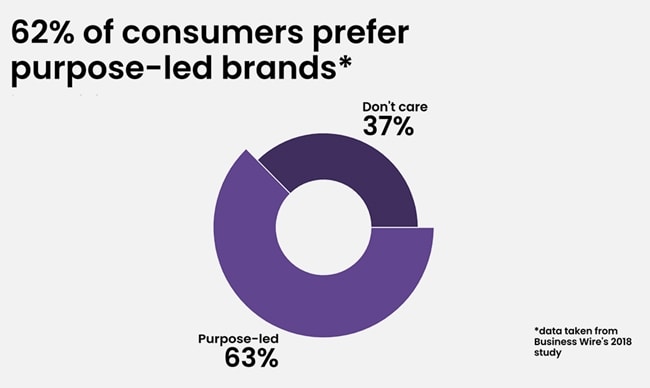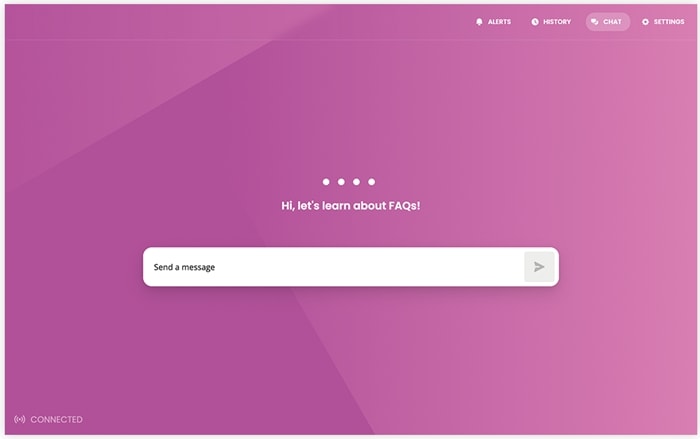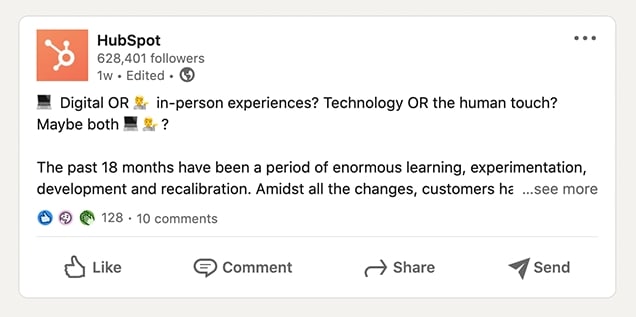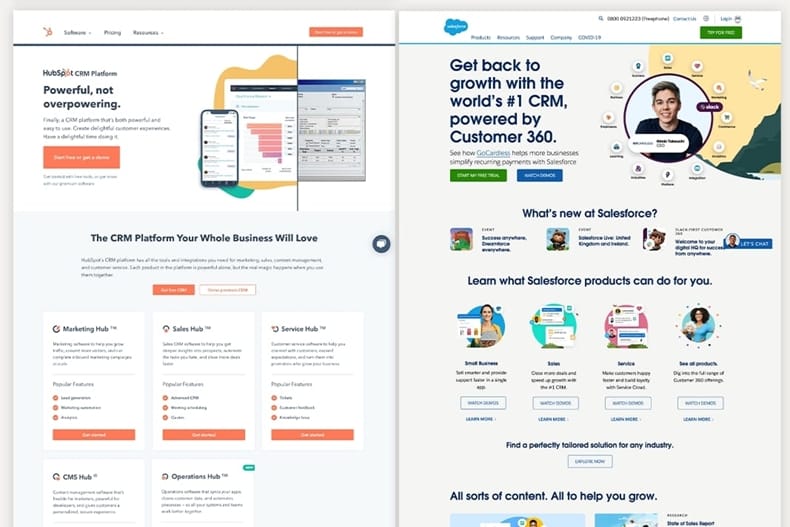When you think of brand-building campaigns, publicity stunts, or viral videos, you typically think of B2C examples.
Why? Is it because brand matters more to consumers? After all, people would rather shop with a brand that has a clear purpose and mission statement, even if it's more expensive.

Perhaps it's because B2C brands feel a greater need to stand out and be remembered.
But don't those points also apply to the B2B market?
Although the B2B audience's purchasing decisions are often swayed by ROI and longevity as opposed to fashion statements and trends, the core purchasing beliefs are the same.
Whether a brand is B2B or B2C, people want to deal with a brand they like and trust.
As more tools become available for B2B marketers and the "professional is the only tone of voice" era seems to be coming to an end, how can a B2B brand establish a unique image among a mob of competitors?
For marketers looking to break out of the box of a traditional and dull brand image, AI can be the answer.
Compare your competitors' brand images
Competitor analysis is a vital part of any marketer's strategy.
Although it takes a certain level of self-reflection and honesty, many marketers are able to look at their direct competitors' websites and say, "We have a lot of similarities."
Yes, each brand has its own unique selling proposition (USP) and tone of voice, but the overall theme is likely consistent across each website.
Take the following leading SaaS companies' homepages.
Succinct copy? Check. Pain-point header? Check. Use cases just below the fold? Check.
Now imagine you're a buyer, opening multiple tabs as you research each website. Does anything stand out?
As a marketer, that leaves you with two options:
- Take a risk in designing a website that is completely different from the industry standard.
- Use tech to stand out.
Though both options can be effective, the second is usually the safest—and most likely to meet the approval of the wider business.
That is especially true from an agency perspective. Pitching an entire website revamp to a client may sound a little daunting, whereas an extra tech choice to differentiate its brand is more feasible.
And with a bit of creativity, it can be even more effective.
Allow your website to speak to its visitors
Chatbots are an easy way for B2B brands to differentiate themselves from the competition.
Think past the old "Hello, how can I help you today?" era of chatbots. Chatbots have quietly evolved to include a plethora of features for markers to use in their endeavors.
Consider this full-page chatbot.

Full-page chatbots, as their name suggests, take up an entire page.
Imagine you are working on a new campaign. You could create a traditional landing page. But what could a full-page chatbot bring? Rather than hoping your target audiences read each piece of carefully crafted copy, you can guide them through the page. Let them direct their journey, ensuring they see only information relevant to them.
You can personalize their welcome message depending on the ad they clicked, the platform they came from, or the time of day.
Unlike a static "about us" page, which more than half of users rank higher in importance than product pages, blog posts, or similar content, chatbots can take your leads through your brand's story.
Share images and videos to highlight points. Let visitors ask questions about certain elements. Use carousels to share a previous year's achievements.
Your buyers are more likely to remember your brand if they've had a conversation with it. A full-page chatbot becomes exactly that: a talking version of your brand.
Be more than just another brand on social
Social media is an invaluable tool for marketers. But for B2B marketers, it can be difficult to gain the reach and engagement of your consumer-facing counterparts. Even B2B content marketing giants such as HubSpot barely get past triple-digit engagement on their posts.

So, you can either fight the engagement battle or employ smarter tactics.
Deploying a chatbot on your social channels, such as Instagram or Facebook Messenger, opens up new avenues for you to engage with your buyers.
Stories can include CTAs that prompt your audience to message your brand. Upon their messaging, your chatbot can guide them through a unique and immersive conversation.
Each conversation can be hyper-tailored to your story, creating an easily achievable, and scalable, form of activity-based personalization.
In brand-building, that provides a unique opportunity to create a memorable experience for your customers. You're no longer another post in their newsfeed, you're the business that answered their questions, shared advice, and let them take control of their interaction with your brand.
At its core, social media is about telling stories. With a chatbot, B2B marketers don't just tell a story, they involve their audience in it.
Use the tools available to you
The better chatbot platforms now come with a vast array of brand-building tools.
Broadcast messages and notifications allow for ad-hoc brand-building exercises. You can promote webinars and share thought leadership content in a way that makes your brand seem exciting and active.
Varying message types, such as carousels and embedding content, let you bring your key achievements and USPs to life.
Marketers have to be adept at storytelling. After all, it's what great businesses are born from. Chatbots provide unique opportunities for marketers to build brand image via an interactive story. Not everyone wants to know every part of your offering or service; let them pick and choose.
From an agency's perspective, offering clients chatbots has never been more flexible.
Depending on your circumstances, white label or implementer partnerships provide the tools to create innovative chatbot conversations. From there, marketers can employ their creativity to build a brand image without needing to build the entire infrastructure themselves.
Marketing agencies, too, are in a unique position to share chatbot ideas with their clients. As chatbot adoption continues to skyrocket, brands will want an expert to help them create theirs.
Many expert agencies are a quick email away. Why not expand your expertise?
It's worth noting that all the previously mentioned activity can be achieved while also tackling other challenges.
Brand-building with a chatbot is more than a brand recall campaign. It's an opportunity to solve pressing challenges while improving brand recognition.
Generate leads via social media by starting conversations. Bring back those great landing page conversion rates through interactive elements.
Use recent advancements to get your brand out there and ensure it's remembered.
More Resources on Chatbots in B2B
Chatbot Advantages and Challenges [Infographic]





